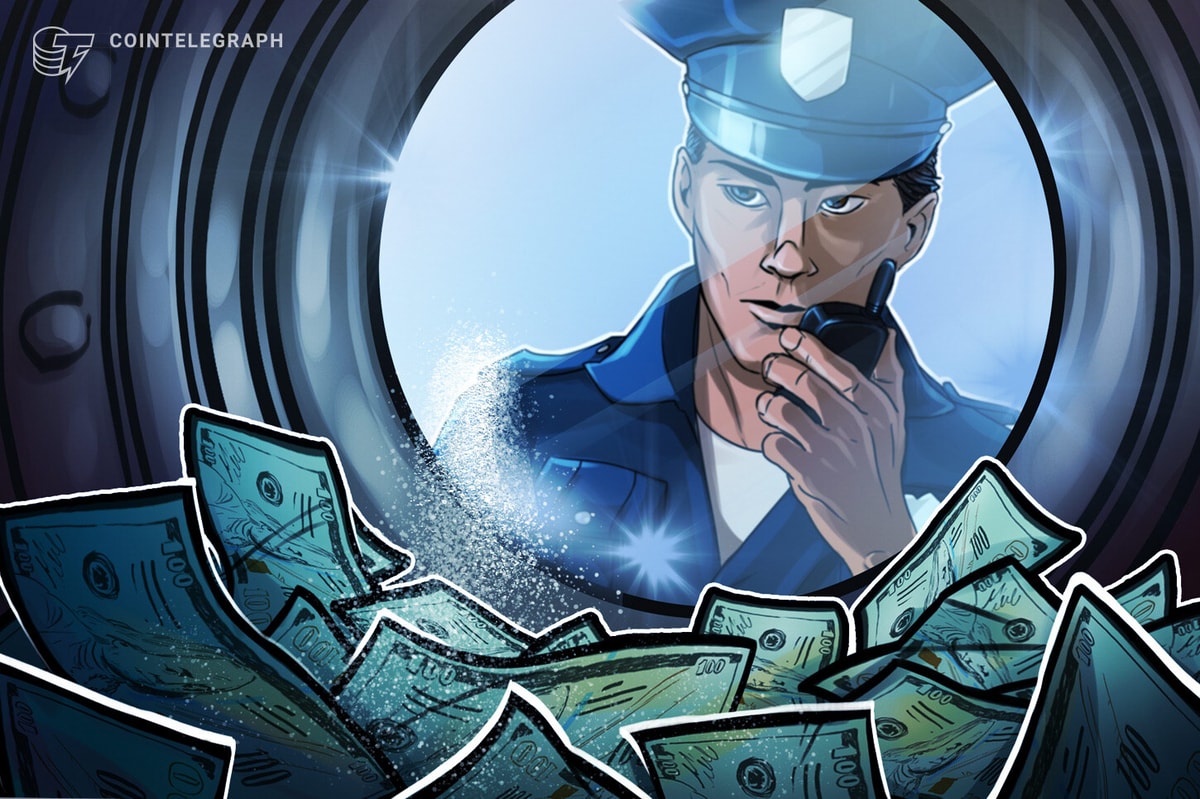
Eigen Layer airdropped tokens this week and there was huge backlash. Some criticism was more warranted than others but beyond allocation levels and tokenomics, the main reason the outcry was so fierce is because traders felt a social contract was broken.
First, the details. EigenLayer distributed 5% of its 1.67 billion token supply this week. This was the first phase of its airdrop, which will distribute 15% of token supply to its users.
Reminder that EigenLayer is DeFi’s third-largest protocol, with almost $15 billion in total value locked (TVL), according to DeFiLlama. It enables users to re-stake their Ether or liquid staking tokens (LSTs) to earn additional yield by securing third-party applications called Actively Validated Services (AVS).
This was a hugely anticipated airdrop – it basically mobilized an entire sector within Ethereum. For months, EigenLayer has awarded points to restakers based on the size of their deposits and how long they participated in restaking. Then, liquid restaking protocols started giving out their own points, which would compound on top of EigenLayer points to users staking there.
Free Money Expectations
Traders’ expectations that they’ll get what’s essentially “free money,” is in part what has driven over $15 billion to EigenLayer, and $10 billion to the liquid restaking sector as a whole.
So, all those traders farming points and staking ETH and LSTs and LRTs had been waiting for this airdrop.
But it was a disappointment to many of them and the backlash was so intense, it actually pushed EigenLayer to change the terms of the drop.
Five Main Points
The main points the EigenLayer community criticized were:
- EigenLayer excluded liquid restaking protocols from the drop
- Eigen excluded users from major jurisdictions including the United States and Canada
- Only 5% of tokens were airdropped
- The linear allocation of tokens.
- EIGEN tokens are initially non-transferable.
Let’s get the easy ones out of the way: EigenLayer excluded liquid restaking protocols from the drop, but they said they would include these in their Phase 2. The Eigen Foundation said it’s already been in touch with these teams to coordinate the airdrop.
Next, the point that EigenLayer also excluded users from countries including the United States, Canada, Korea, Russia and China. This is of course because of regulatory concerns. The list of excluded countries goes on and on.
In this case, I think criticism is founded, especially with regards to excluding the U.S. It is reasonable to believe that a large chunk of Eigen’s TVL comes from U.S. users. Looking at traffic for crypto websites, at least half comes from the U.S. That’s where active investors in crypto are, and where people who actually have money to invest in DeFi protocols are.
Some people said, “Eigen had no issues taking money from all these risky jurisdictions, but it’s being extra careful in giving money away.” I think they’re right to call a double standard here. You can’t have it both ways.
“Never Promised an Airdrop”
I’ve also seen an argument that goes, “people are crying because they didn’t get an airdrop they were never promised.”
To me that should be almost insulting to any web3 native. If you’re giving away points, especially if you have billions in TVL, $100 million in VC investment, and have either announced or hinted there’s a token coming up, it’s expected those points will correspond to tokens down the line.
To put it in crypto terms, this is social consensus. It’s learned behavior in a community that has become a social contract. By incentivizing users with points so that they stake their money, but then not following through with the corresponding tokens, EigenLayer essentially broke that social contract.
“Only 5% of Tokens”
Next criticism is that “only” 5% of tokens were airdropped. This is an interesting one. The question is, is this in line with other airdrops or is it an outlier?
First, it’s important to keep in mind that total airdrop accounts for 15% of total supply.
If that were the total share reserved for the community, then that would indeed be extremely low. For context, token allocations saved an average of 40% of tokens to community incentives or distributions in 2023, according to a report by Liquify. Community allocation has been around 40% since 2019, the report shows.
But EigenLayer is also allocating 15% of tokens to community initiatives and 15% to ecosystem development. Added all together, this community pool equals 45% – in line with what’s been the norm.
In terms of the 15% allocation for the airdrop, that’s also in line with what most major projects have done. Uniswap’s airdrop was for 15% of token supply, Arbitrum’s was for 12.75%, and Jito was for 10%, according to research by IntoTheBlock.
I think the reason why 15% felt like a smaller share, is because tokens were distributed among more people. There were 280,000 eligible wallets in the airdrop, compared with 250,000 wallets in the Uniswap airdrop, for instance. And that’s because points had signaled an airdrop was coming, and so more people were incentivized to re-stake ETH and participate in the ecosystem.
Guaranteed Minimum
Next criticism was the linear allocation of tokens, meaning eligible wallets receive EIGEN proportionally to the points they hold. For example, a wallet holding 100 Eigen points will receive 100 EIGEN. The Eigen Foundation said it chose the linear distribution approach to prevent Sybil attacks, where an individual could use multiple addresses and bots to claim a disproportionately large share of the airdrop.
The big criticism here is that the small stakers are at a disadvantage.
EigenLayer initially tried to balance things out for small stakers by setting aside roughly 1% of the Season 1 tokens to guarantee that each restaker gets at least 10 EIGEN. After the outcry they increased this minimum level by 100, meaning all Season 1 users will receive a minimum of 110 EIGEN.
Non-Transferabilty
The other criticism EigenLayer addressed is that EIGEN tokens are initially non-transferable, meaning that holders will not be able to sell their tokens.
Eigen said the reason why they made the token non-transferable is to allow for community discussion of EIGEN’s novel design, parameters, and proposed implementation; that they wanted key payments and slashing features to be well established; and to enhanced decentralization by allowing for a broader distribution of EIGENs, including through the 15% reserved for future stakedrop seasons.
The reason why it’s problematic to make the token non-transferrable is that it gives an unfair advantage to insiders, who got larger token allocations and are subject to vesting. Tokens of investors and early contributors are locked for one year, after which for the following second and third years, 4% of total tokens are unlocked each month.
But say EigenLayer waited one year until the token became transferable. That means insiders can start to immediately sell their tokens as soon as it becomes tradable.
EigenLayer addressed this by clarifying that the lockup countdown starts after transferability.
They also provided a clearer timeline as to when the token will be transferable, saying the features they want to see enabled for transferability are targeted for the protocol’s mainnet launch in September this year.
Points Changed Airdrops
After analyzing each criticism, I understand why people were upset with the geo-block and lack of transferability, but I don’t think it’s fair to say the team was “greedy and didn’t distribute enough tokens,” as their token allocation is in line with what’s been the norm.
But what’s clear is that the introduction of points has materially changed the game for airdrops. They introduced higher expectations from token distributions, and in my opinion, rightfully so. Traders and projects are effectively entering a social contract where traders put their capital at risk to perform actions projects are incentivizing with points.
Why put money at risk in exchange for points? Because there is the expectation that those points will become money (via tokens) down the line. The expectation is there because that is effectively what has been playing out in DeFi, with multiple projects’ points systems effectively leading to airdrops, and entire multi-billion dollar protocols built around the concept. By awarding points, you are entering into this game and it’s disingenuous to pretend otherwise.
Read More: thedefiant.io








 Bitcoin
Bitcoin  Ethereum
Ethereum  Tether
Tether  XRP
XRP  Solana
Solana  USDC
USDC  Dogecoin
Dogecoin  Cardano
Cardano  TRON
TRON  Lido Staked Ether
Lido Staked Ether  Wrapped Bitcoin
Wrapped Bitcoin  Sui
Sui  Wrapped stETH
Wrapped stETH  Chainlink
Chainlink  Avalanche
Avalanche  Stellar
Stellar  Hyperliquid
Hyperliquid  Shiba Inu
Shiba Inu  Hedera
Hedera  Bitcoin Cash
Bitcoin Cash  LEO Token
LEO Token  Toncoin
Toncoin  Litecoin
Litecoin  Polkadot
Polkadot  WETH
WETH  USDS
USDS  Monero
Monero  Wrapped eETH
Wrapped eETH  Bitget Token
Bitget Token  Binance Bridged USDT (BNB Smart Chain)
Binance Bridged USDT (BNB Smart Chain)  Pepe
Pepe  Pi Network
Pi Network  Ethena USDe
Ethena USDe  Coinbase Wrapped BTC
Coinbase Wrapped BTC  WhiteBIT Coin
WhiteBIT Coin  Bittensor
Bittensor  Uniswap
Uniswap  Dai
Dai  Aave
Aave  NEAR Protocol
NEAR Protocol  Aptos
Aptos  OKB
OKB  Jito Staked SOL
Jito Staked SOL  Ondo
Ondo  Cronos
Cronos  Internet Computer
Internet Computer  Ethereum Classic
Ethereum Classic  BlackRock USD Institutional Digital Liquidity Fund
BlackRock USD Institutional Digital Liquidity Fund